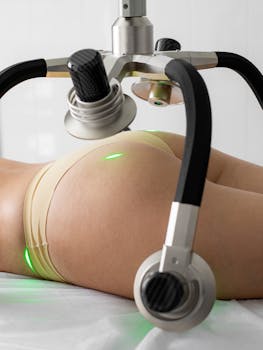A hair transplant calculator can help people understand potential costs and the factors that influence them before they book a consultation. Used responsibly, this kind of online estimator gives a ballpark figure for procedures, helps set realistic expectations, and highlights the variables—like graft count, technique, and geographic location—that drive price. This article explains what these calculators do, who benefits from them, and important limitations to keep in mind.
Using a hair transplant cost calculator: what to expect
Most hair transplant cost calculators combine a few basic inputs—such as the degree of hair loss, the estimated number of grafts needed, and your chosen technique (FUE vs. FUT)—to produce an estimated price range. These tools are useful if you want a quick orientation to whether a procedure is likely to be modestly priced or a significant investment. They are not a substitute for a clinical assessment by a certified specialist, but they help you prepare smarter questions for your consultation and compare clinics more effectively.
How calculators estimate cost
Calculators typically use one or more of the following assumptions: average price per graft, typical grafts required for certain stages of hair loss, and local market adjustments. For example, many clinics charge per graft, so multiplying an estimated graft count by a per-graft fee yields a simple baseline. More sophisticated calculators factor in surgeon fees, anesthesia, facility charges, and post-op care. If you see an output from a hair transplant cost calculator, treat it as an informed guess rather than a final quote.
Who should use a calculator?
People considering a transplant who want to understand likely costs at different treatment levels will find calculators helpful. They are especially useful for: prospective patients comparing the relative cost of IFUE versus FUT, people budgeting for a staged treatment plan over several years, and those deciding whether to pursue surgical versus non-surgical options like medication or PRP. However, anyone with unusual scarring, very low donor density, or medical conditions that affect healing should prioritize a clinic consultation before relying on any online estimate.
Limitations and common pitfalls
- Estimates can’t measure donor area quality or the surgeon’s skill—two major cost and outcome drivers.
- Regional price differences and clinic reputation can shift actual costs far beyond a calculator’s range.
- Some calculators omit follow-up care, medications, and potential touch-up sessions that add to total expense.
How to use estimates wisely
Use a calculator to create a shortlist of clinics whose price ranges match your budget, then schedule consultations. Bring photos of your scalp and be ready to discuss timeline, realistic outcomes, and financing. Ask clinics for itemized quotes and compare what’s included—are anesthesia, pre-op testing, and post-op visits built into the price, or billed separately?
For broader context about hair restoration history, techniques, and commonly reported outcomes, the Wikipedia article on the procedure provides a concise overview: Hair transplant — Wikipedia.
Choosing a clinic and interpreting quotes
When you receive quotes informed by a hair transplant cost calculator, prioritize qualifications and transparent pricing. A low per-graft price can be attractive, but confirm who will perform the transplant (the lead surgeon or a trainee), graft survival expectations, and revision policies. Check before-and-after portfolios and patient reviews. If you’re exploring other cosmetic procedures while deciding, you may also find it helpful to read related cost guides like descriptive anchor text to understand how clinics list inclusions and exclusions.
Practical tips before booking
- Get multiple in-person evaluations rather than relying solely on online calculators.
- Ask for itemized estimates and a recovery timeline to anticipate downtime and medication needs.
- Discuss realistic goals and possible need for multiple sessions during the initial consultation.
In summary, a hair transplant calculator is a practical planning tool for cost estimation and initial comparison, but it should be paired with professional consultation and careful review of clinic credentials and included services.
- Takeaways:
- Calculators provide ballpark cost estimates but aren’t definitive quotes.
- Price depends on graft count, technique, surgeon skill, and geographic location.
- Always confirm by booking consultations and requesting itemized quotes.
FAQ
Q: Can an online calculator tell me exactly how much my transplant will cost?
A: No. Calculators provide estimates based on general inputs. Exact cost requires an in-person assessment of donor supply, scalp condition, and a clinic’s itemized fees.
Q: Should I choose the lowest quoted price?
A: Not automatically. Lower prices may reflect less experienced providers or omitted services. Prioritize safety, surgeon qualifications, and clear inclusions over cost alone.
Q: How many consultations should I get?
A: It’s wise to consult with at least two or three reputable clinics to compare recommendations, graft estimates, and overall cost breakdowns before making a decision.






